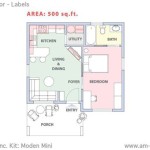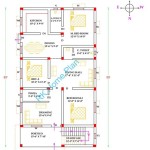House With Walkout Basement Plans: Design, Benefits, and Considerations
A house with a walkout basement presents a unique opportunity to maximize living space and enhance property value. Unlike traditional basements, which are typically subterranean and often limited in functionality, walkout basements are designed with at least one wall that is fully exposed to the exterior grade, allowing for direct access to the backyard or a lower-level outdoor space. This design element significantly impacts the versatility and usability of the basement, making it an attractive feature for homeowners seeking additional living areas, rental potential, or improved connection to the outdoors.
House plans incorporating walkout basements require careful consideration of the site's topography, drainage, and local building codes. The design must integrate the basement seamlessly into the home's overall aesthetic and functionality, ensuring that it is not perceived as an afterthought but rather as a cohesive and valuable part of the living space. Several factors influence the design process, including the slope of the land, the desired level of natural light, and the intended use of the walkout basement area.
Proper planning and execution are crucial for a successful walkout basement project. This involves working with experienced architects, engineers, and contractors who understand the specific challenges and opportunities associated with this type of construction. A well-designed and properly constructed walkout basement can significantly enhance the quality of life for homeowners, providing a flexible and adaptable space that can be used for a variety of purposes.
Advantages of Walkout Basements
Walkout basements offer numerous advantages compared to standard basements or slab-on-grade foundations. These advantages extend beyond simply adding square footage to the home; they impact lifestyle, property value, and overall livability.
One primary advantage is the increased natural light and ventilation. The exposed wall allows for the installation of larger windows and doors, flooding the basement with sunlight and fresh air. This is a significant improvement over traditional basements, which often feel dark and damp. The abundance of natural light creates a more inviting and comfortable living space, making the walkout basement feel less like a subterranean space and more like an extension of the main living area.
Another key benefit is the direct access to the outdoors. The walkout feature provides a seamless transition between the indoor and outdoor environments, allowing for easy access to the backyard, patio, or garden. This is particularly appealing for families with children or pets, as it provides a safe and convenient way to enjoy the outdoors. The outdoor access also enhances the functionality of the basement, making it ideal for entertaining, recreation, or simply relaxing in a private outdoor space.
Furthermore, walkout basements offer increased flexibility and potential for various uses. They can be transformed into a home office, a guest suite, a recreation room, a home theater, or even a separate living space with its own entrance and amenities. This flexibility makes walkout basements a valuable asset for homeowners seeking to adapt their living space to changing needs and preferences. The potential for a separate entrance also makes the walkout basement suitable for use as a rental unit, generating additional income for the homeowner.
From a real estate perspective, homes with walkout basements often command a higher market value compared to those with standard basements. The added functionality, natural light, and outdoor access make them highly desirable to potential buyers. A well-designed and finished walkout basement can significantly increase the square footage of the finished living space, thereby boosting the overall value of the property.
Key Design Considerations for Walkout Basement Plans
Designing a house with a walkout basement requires careful planning and attention to detail. Several key considerations must be taken into account to ensure that the basement is functional, aesthetically pleasing, and integrated seamlessly into the home's overall design.
The first and perhaps most critical consideration is the site's topography. The slope of the land directly influences the design of the walkout basement. A gentle slope is ideal, as it allows for a gradual transition between the interior and exterior spaces. However, even on steeper slopes, a well-designed walkout basement can be achieved with proper grading and landscaping. The key is to ensure that the exposed wall is properly integrated into the surrounding terrain, creating a natural and aesthetically pleasing transition.
Drainage is another crucial aspect of walkout basement design. Proper drainage is essential to prevent water damage and maintain a dry and comfortable living space. This involves carefully grading the land around the basement to direct water away from the foundation, installing a perimeter drainage system to collect and divert water, and ensuring that the exposed wall is properly waterproofed. Poor drainage can lead to leaks, mold growth, and structural damage, so it is essential to address this issue during the design phase.
The placement and size of windows and doors are also important design considerations. Maximizing natural light and ventilation is a key advantage of walkout basements, so it is important to carefully plan the location and size of windows and doors. Larger windows and doors can provide ample natural light and create a more open and inviting space. Consider the orientation of the house and the surrounding landscape when determining the placement of windows and doors to optimize sunlight exposure and privacy.
Interior layout and design are equally important. The interior layout should be functional and adaptable to the intended use of the basement. Consider factors such as the location of stairs, the placement of walls and partitions, and the layout of utilities. A well-designed interior layout can maximize the usable space and create a comfortable and inviting living environment. Choose materials and finishes that are durable, low-maintenance, and aesthetically pleasing. Consider using light colors and reflective surfaces to enhance the natural light and create a brighter and more spacious feel.
Furthermore, consider the accessibility of the walkout basement. If the basement is intended for use by elderly or disabled individuals, ensure that it is accessible by wheelchair or other mobility devices. This may involve installing ramps, wider doorways, and other accessibility features. Incorporating universal design principles into the walkout basement plan can make it more accessible and user-friendly for all occupants.
Navigating Building Codes and Regulations
Building a house with a walkout basement involves navigating local building codes and regulations. These codes are in place to ensure the safety and structural integrity of the building, as well as to protect the environment. It is crucial to understand and comply with all applicable codes and regulations to avoid costly delays and potential legal issues.
Local zoning ordinances may dictate specific requirements for basements, including setbacks, height restrictions, and allowable uses. It is important to research these ordinances before starting the design process to ensure that the proposed walkout basement complies with all applicable regulations. Zoning regulations can vary depending on the location and the type of property, so it is essential to consult with local authorities to obtain accurate and up-to-date information.
Building codes typically address structural requirements, fire safety, and energy efficiency. The structural requirements will dictate the size and spacing of footings, walls, and other structural components to ensure that the basement can withstand the weight of the building and the surrounding soil. Fire safety codes will specify requirements for egress windows, fire-rated walls, and smoke detectors. Energy efficiency codes will mandate insulation levels, window types, and other measures to reduce energy consumption and improve the building's overall energy performance.
Permitting is a crucial step in the building process. Before starting any construction work, it is necessary to obtain the required permits from the local building department. The permitting process typically involves submitting detailed plans and specifications for review. The building department will review the plans to ensure that they comply with all applicable codes and regulations.
Inspections are conducted throughout the construction process to ensure that the work is being performed in accordance with the approved plans and specifications. The building inspector will typically inspect the foundation, framing, plumbing, electrical, and mechanical systems. Addressing any deficiencies identified during the inspection process is essential to obtain final approval for the project.
Engaging with experienced professionals, such as architects, engineers, and contractors, is crucial for navigating building codes and regulations. These professionals have the knowledge and expertise to ensure that the walkout basement is designed and constructed in accordance with all applicable requirements. They can also assist with the permitting process, streamline the construction process, and minimize the risk of delays or problems.

Walkout Basement House Plans To Maximize A Sloping Lot Houseplans Blog Com

House Plan 3 Bedrooms 2 5 Bathrooms 3992 V3 Drummond Plans

Modern Farmhouse Plan W Walkout Basement Drummond House Plans

Small Cottage Plan With Walkout Basement Floor

Don Gardner Walkout Basement House Plans Blog Eplans Com

Walkout Basement Contemporary Style House Plan 8588

Small Cottage Plan With Walkout Basement Floor

Cost Effective Craftsman House Plan On A Walkout Basement 25683ge Architectural Designs Plans

Walkout Basement House Plans With Photos From Don Gardner Houseplans Blog Com

Plan 64507sc Exclusive Ranch Home With Walk Out Basement Option House Plans Floor








